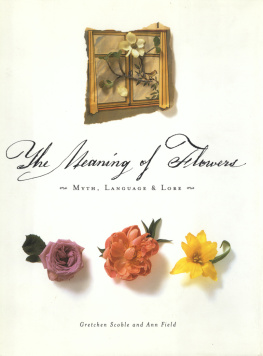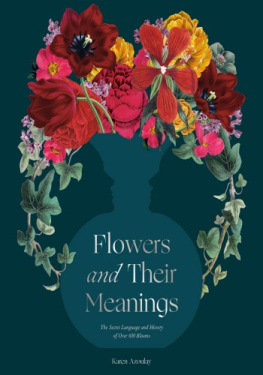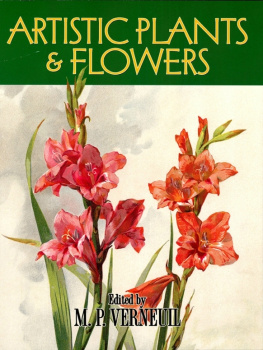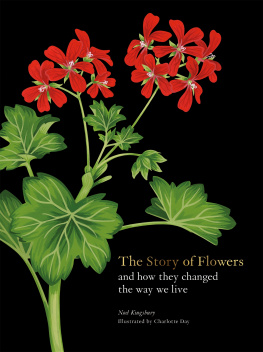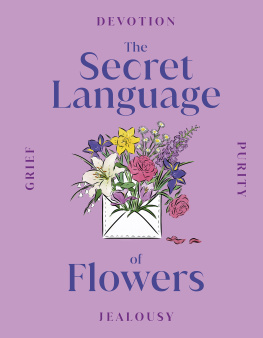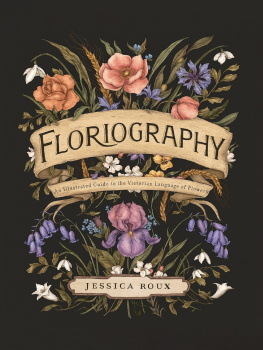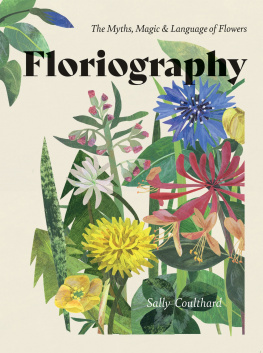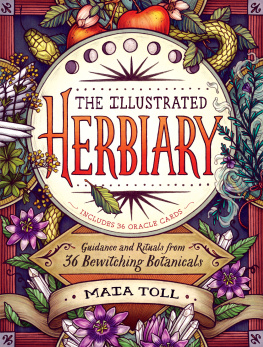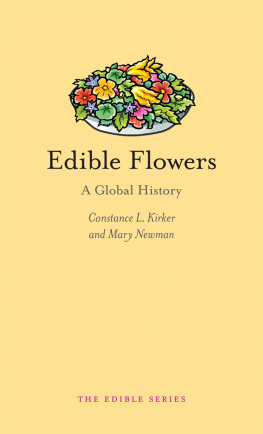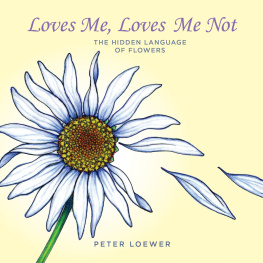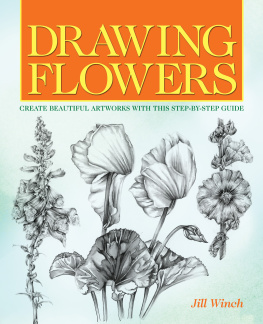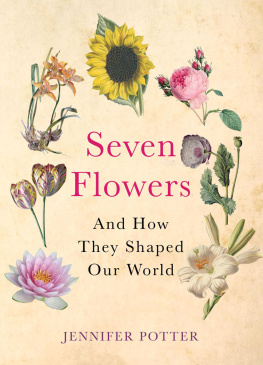

For Matt, Kyle and Nicole GS
For Clive, my constant inspiration AF

Text copyright 1998 by Gretchen Scoble & Ann Field.
Illustrations copyright 1998 by Ann Field.
Calligraphy copyright 1998 by Elvis Swift.
All rights reserved. No part of this book may be reproduced in any form without written permission from the publisher.
ISBN: 978-0-8118-1931-2 (hc)
ISBN: 978-1-4521-4090-2 (ebook)
The Library of Congress has cataloged the hardcover edition as follows:
The Library of Congress Cataloging-in-Publication Data:
Scoble, Gretchen. The meaning of flowers / by Gretchen Scoble and Ann Field; collages by Ann Field; photography by Holly Lindem.
p. cm.
1. Flower language. 2. Symbolism of flowers. I. Field, Ann. II. Title.
GR780.S4 1998
398.368213dc21 97-30802
CIP
Book and cover design by Gretchen Scoble.
Chronicle Books LLC
680 Second Street
San Francisco, California 94107
www.chroniclebooks.com
Table of Contents

FLOWERS CALL TO US. They speak a language we almost hear. Each flowers color seems an announcement. The single wildflower by the path murmurs its particular name. In a vase, they sing in chorus. Our poetic relationship with flowers may arise from the function of blossoms in nature. Flowers are beautiful and odorous for a reason: to spread pollen and engender their kind. Maybe this basic association has always reminded our species of its own engendering.
We have always worn flowers in our hair. In our literature of loveeast and west, north and southwe have woven flowers into myths and stories and given them meanings. We have presented them to one another, found beauty in their blooms. We have taken flowers as emblems and composed of them a language of our own.
Since ancient times, we also have invested these floral organs with magical powers, especially in the matter of love. The periwinkles spell engendered love; the myrtle kept it alive. In a fragrant midsummer nights dream, pansies placed on the eyes of a sleeper induced passion for the one who woke him. A distant lover, blowing on a forget-me-not, could perceive the loved ones very thoughts.
Asia honored flowers with its own profound tradition. The daylily, which in England was said to indicate flirtation, in China symbolized fertility. The first flower mentioned in literature is the lotus, the flowering water lily, which in China came to symbolize perfect truth and purity and was associated with Buddha himself. In India, the Hindus said that before creation the world was a golden lotus, the Madripadma or Mother Lotus. The god Brahma was born from this golden lotus, and he is often represented seated within the calyx of the flower.
Many of the flowers now so familiar in the Westchrysanthemums, wisteria, peonieshave Asian origins. The Japanese especially have found significance in flowers. Japanese poets saw the transience of life in the morning glory and an image of prosperity in the camellia. The symbolic meanings assigned to the blooms informs the ancient Japanese art of flower arrangement. The most popular card game in Japan has suits representing the flowers of the year.
In the West, flowers have been given meanings since time immemorial. Modern feelings for flowers were articulated, perhaps most perceptively, by the Romantic poets. The Romantics praised flowers and found themselves in their blooms. In possibly his most characteristic poem, John Keats identifies with Narcissus, the legend and the flower. By a pool in the woods, he sees that forlorn blossom drooping over its own watery image, and imagines Narcissus, who drowned in self-love, gazing at his own face this way. Though Robert Herrick had written of the fleeting bloom of the daffodil (Fair daffodils, we weep to see/You haste away so soon.), William Wordsworth made it new. Walking the vales and hills more than a century later, he comes upon a host of golden daffodils, recalling it afterward in motion like the sea.
By the end of the Romantic period, this sublimity of flowers had crystallized into a social code for Victorian ladies and gentlemen. Courtship then was nothing if not discreet. Within that context, flowers came to serve a specific purpose as a secret code. A bouquet might bear a message. The number of leaves on a decorative branch might indicate the date and time of a secret rendezvous, the blooms the emotional intent of the exchange. In no period was it more true that sweet flowers alone can say, as Thomas Hood had written, what passion fears revealing.
From these secret codes for flowers, the Victorian Language of Flowers was created. Lists circulated, providing sometimes different meanings for each flower. The fragrant tuberose became an invitation to dangerous pleasures. A double daisy was said to mean, I feel as you do. The Language of Flowers was a parlor game, as well as a way in which discreet couples might communicate. After all, they were just flowers. Queen Victoria herselfreserved in matters of sexhad sketched the blooms in the Royal Gardens at Kew. During Victorias reign, a number of flower code books were published. Coded bouquets were, for a time, quite the rage.

So, in ways specific and poetic, sensual and implicit, the urge to name the flowers, to know them and to give them stories, has long possessed us. Even the odor of flowers seems to promise us something. A flowers scentinvisible yet real, writes Beverly Seaton, has long been the emblem of the human soul. This book explores some of the mythic and personal significance of flowers, drawing upon the botany, the literature, and the lore of blooms to describe each ones acquired significance. This brief compendium looks to both the East and West for its inspiration, gathering the meanings we have given to flowers as we might gather the blooms themselves.
The amaryllis, taller than other flowers, suggested pride to the Victorians in England.
Its startling hornlike blossom erupts from the stem, shooting straight up and often eclipsing the smaller flowers in the garden. This explosion of bloom is one reason that the Greeks named this flower amaryllis, meaning splendor. One is reminded of Dylan Thomass evocation of the force that through the green fuse drives the flower.

The laurel-leaved garden magnolia expressed dignity to the Victorians. The wild, swamp-dwelling magnolia suggested perseverance.
The magnolia is an ancient species, millions of years older than Homo sapiens. First to cultivate magnolias were the Chinese, who loved them for their beauty, and flavored soups with their buds. In China, the magnolia is an emblem of gentleness and feminine beauty.
In the American South, the magnolia is the tree of society. Growing up to eighty feet tall and casting fragrance from its creamy white blossoms, the magnolia perfumes the cotillion in the southern night.
Next page
